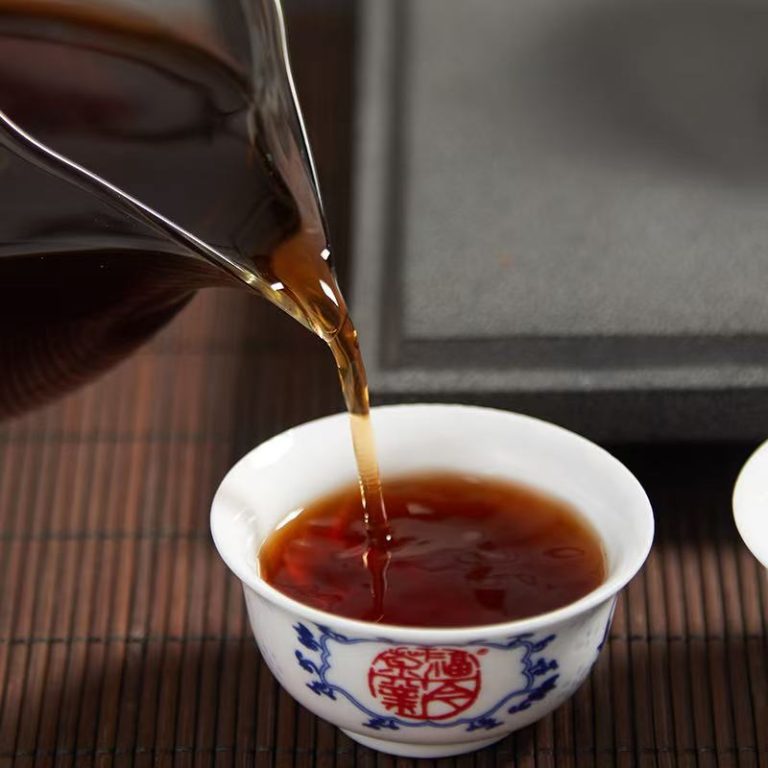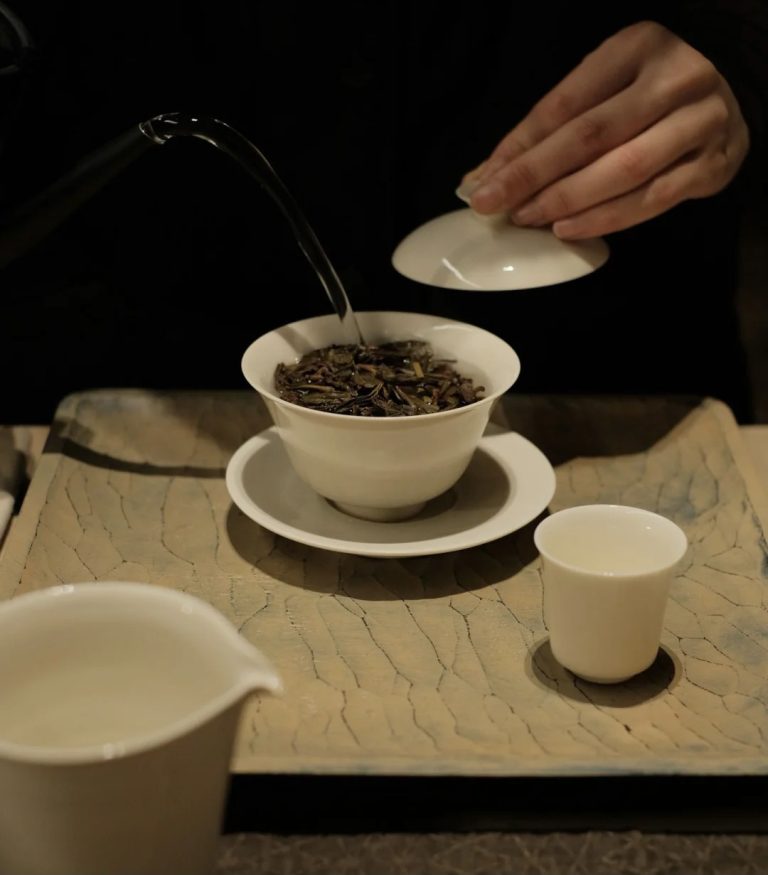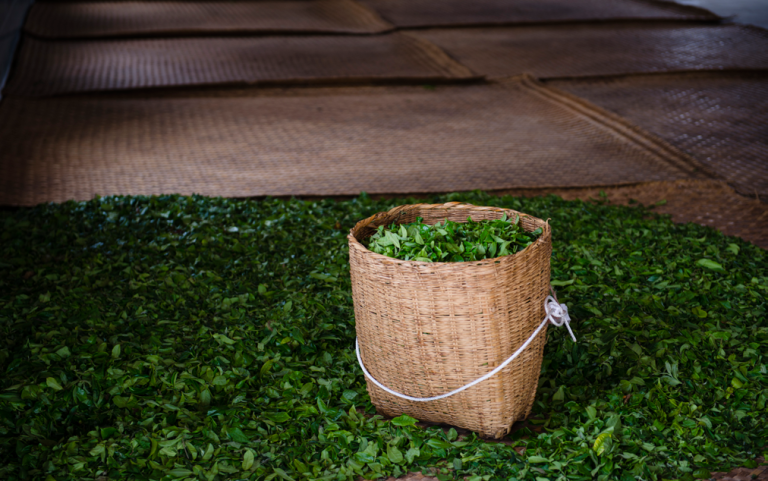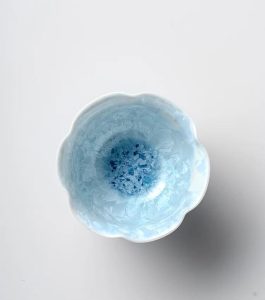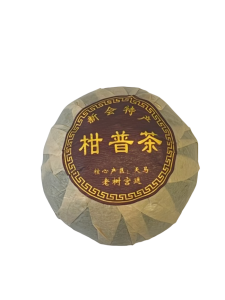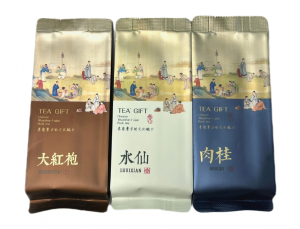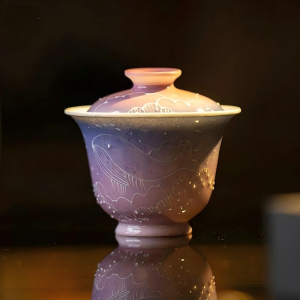
If you’re a tea lover, you’ve probably heard of Pu-erh tea. But have you ever encountered Lao Cha Tou (老茶头)? These little nuggets are a rare and prized treasure in the world of tea. Not only do they have a fascinating history, but they also offer a unique, smooth taste that’s hard to forget. Let’s dive into what Lao Cha Tou is all about, how it’s made, and why it’s so special.
What Is Lao Cha Tou?

Lao Cha Tou is often called “tea nuggets” or “tea lumps.” These are clumps of tea leaves that form during the fermentation process of ripe Pu-erh tea (Shou Pu-erh). Their name, which translates to “Old Tea Heads,” comes from their appearance, which resembles small, natural tea “nuggets.”
These little nuggets are created through the pile fermentation process, a method that involves piling tea leaves, moistening them, and turning them regularly to encourage fermentation. Over time, the leaves stick together to form these tight, irregular clumps, which are then separated and used for brewing.
How Lao Cha Tou Is Made
Here’s a simple breakdown of how Lao Cha Tou comes to life:
- Fermentation: Tea leaves are piled and left to ferment in a controlled environment. This is when the magic happens, as heat and moisture work together to break down the leaves.
- Natural Binding: The sticky pectin and sugars released during fermentation act like glue, binding the leaves together into these small, rock-like clumps.
- Manual Sorting: After fermentation, the stubborn clumps are carefully separated by hand and sold as Lao Cha Tou.
Key Characteristics of Lao Cha Tou:
When you first see Lao Cha Tou, you might be surprised by its rough, mineral-like appearance. But don’t let that fool you—the flavour is what makes it truly special.
- Appearance: Ranging from chestnut-brown to dark brown or even black, these nuggets can vary in size from 1 to 3 cm.
- Brewed Liquor & Taste: When brewed, Lao Cha Tou yields a deep reddish-brown liquor. The flavour is rich, smooth, and sweet, with notes of caramel, dried dates, and even rice pudding. It’s known for being exceptionally smooth with little to no bitterness.
How to Brew Lao Cha Tou

Brewing Lao Cha Tou is a bit of an art. Here’s how you can enjoy it at its best:
- Rinse: Start by pouring boiling water over the tea nuggets for about 15–20 seconds to wake up the leaves. Discard the rinse water.
- Steep: For gongfu-style brewing, infuse the nuggets for 20–30 seconds, gradually increasing the time as you go. For a more robust brew, simmer it for 3–5 minutes.
- Pro Tip: Gently separate the nuggets with a tea needle to speed up the brewing process and get more out of each infusion.
Teaware Recommendations:
Use a Yixing clay teapot for the best results, as it retains heat well. Alternatively, a glass kettle will also work nicely, allowing you to admire the deep colour of the liquor.
The Value of Lao Cha Tou
Lao Cha Tou is quite rare, with only 1–2 kg produced for every 100 kg of Pu-erh tea. As such, it’s become a luxury item in the tea world. The price can vary:
- Standard Quality: $100–£200 per kg
- Aged or Premium Batches: £300–£500 per kg
Aged Lao Cha Tou (10+ years) is especially prized for its depth of flavour, making it a fantastic tea to collect.
Why Is Lao Cha Tou So Special?
Lao Cha Tou used to be seen as a waste product of the Pu-erh tea-making process. It was often sold cheaply or used in low-grade blends. But in recent years, tea lovers have rediscovered its charm, especially for its unique ageing potential and smooth, creamy taste.
Storage Tip:
Keep your Lao Cha Tou in a cool, dry place to preserve its flavours. As it ages, it becomes even more mellow and complex, much like a fine wine.
The Hidden Treasure of Pu Erh Tea

Lao Cha Tou is the ultimate hidden gem in the world of tea. From humble beginnings as factory scraps to becoming a luxury item sought by collectors, its journey is nothing short of fascinating. Whether you’re new to Pu-erh tea or a seasoned enthusiast, Lao Cha Tou is worth experiencing for its rich flavour and unique qualities.
If you’re eager to try some Old Tea Heads Ripe Pu Erh, check out our product here. It’s a wonderful introduction to the world of Lao Cha Tou, offering a smooth, rich brew that will satisfy both newcomers and seasoned tea connoisseurs alike.
FAQs
Lao Cha Tou is a type of fermented Pu-erh tea that forms into tight clumps during the fermentation process. These “tea nuggets” are prized for their smooth, rich flavour.
Rinse the nuggets first, then brew them in a Yixing teapot or glass kettle. Infuse for 20–30 seconds per round, gradually increasing the steeping time for multiple infusions.
Yes, Lao Cha Tou improves with age, just like Pu-erh tea. Aged Lao Cha Tou (10+ years) is highly valued for its complex flavours.

